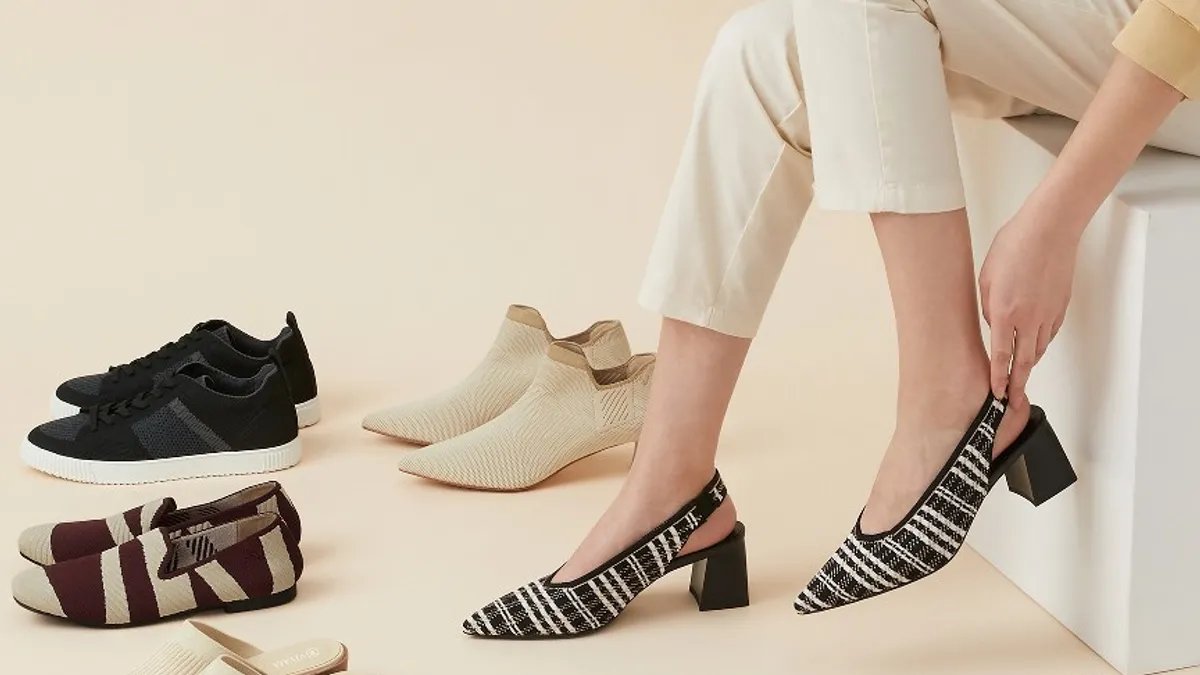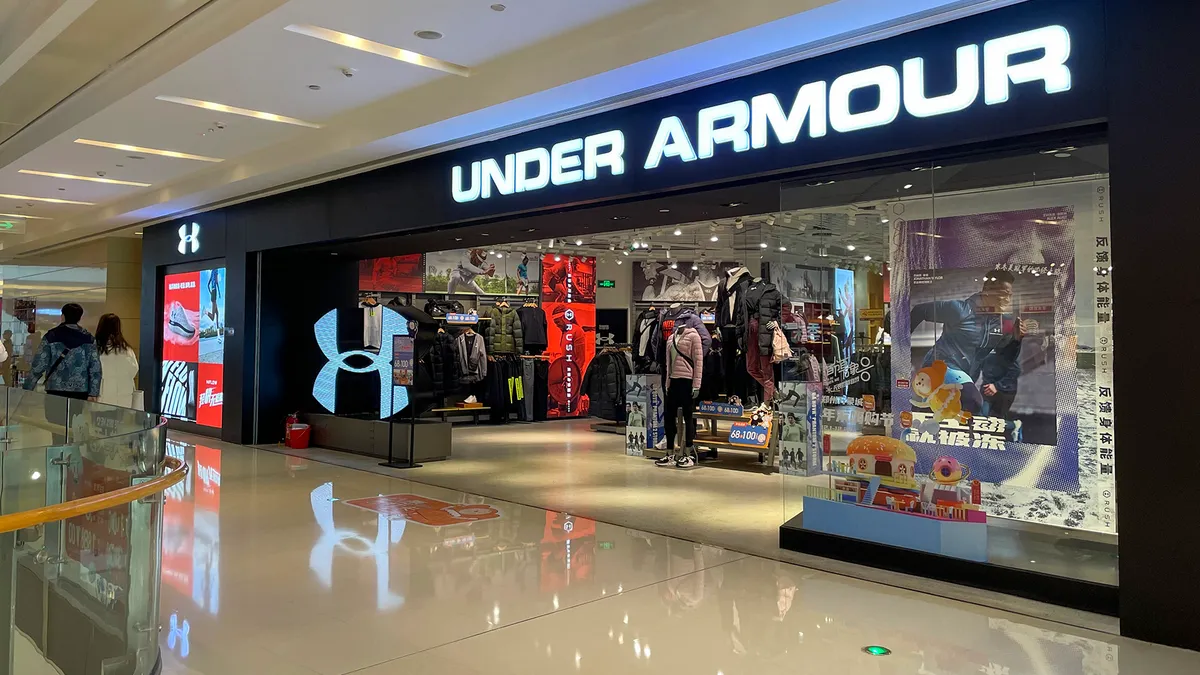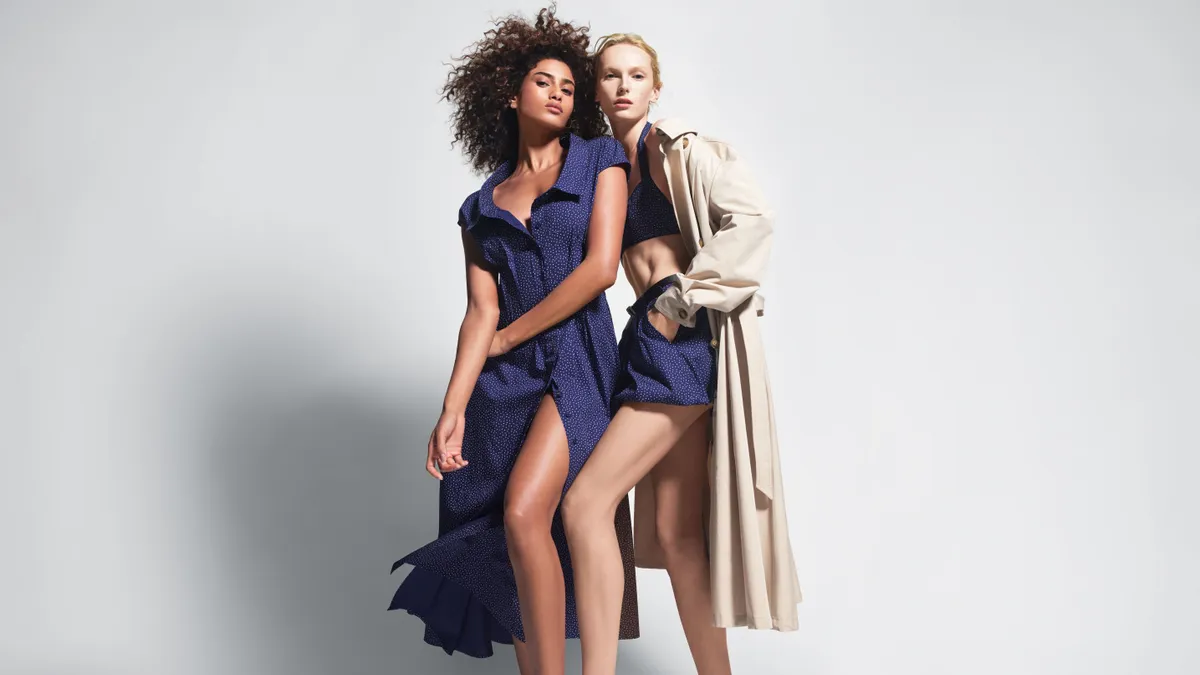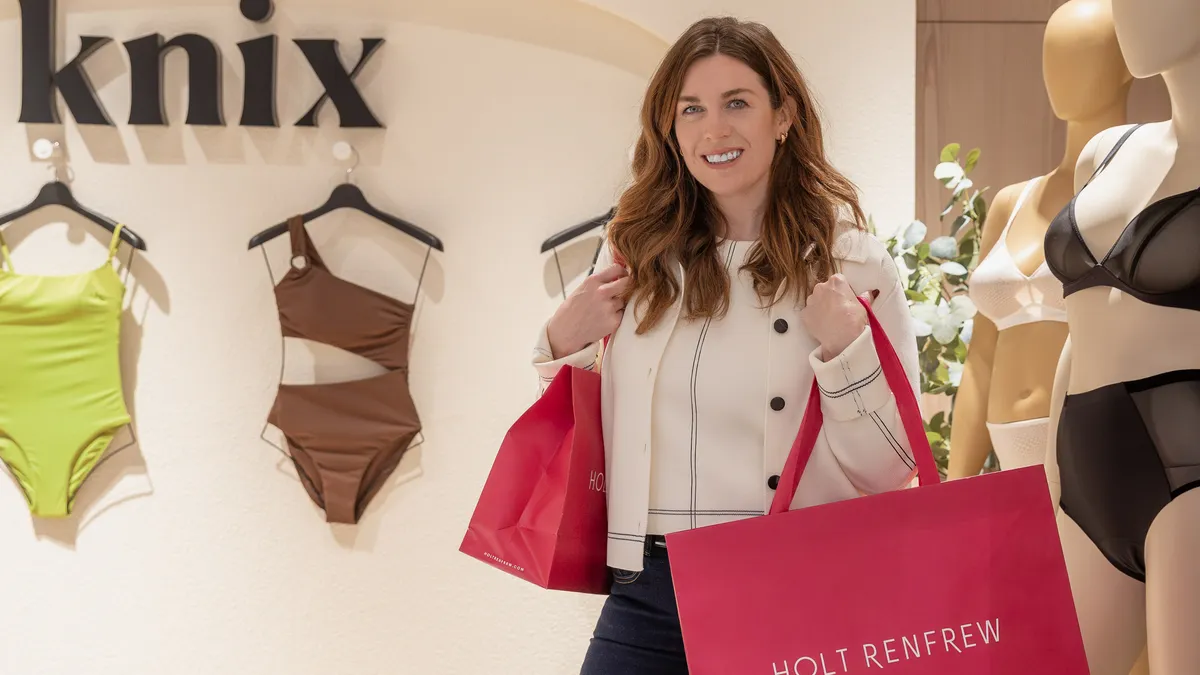It looks like 2017 is going to be a stable, but not spectacular, year for apparel retail. According to a report released by Moody’s in mid-December, the sector can expect sales growth of 6% to 8%, led primarily by direct-to-consumer channels and international growth. However, the same report anticipates apparel and footwear sellers losing consumer dollars to healthcare, rent, home-related products, electronics and cars. In addition, traffic is expected to be weak throughout the year, with department stores and larger retailers such as Wal-Mart bearing the brunt of that decline.
Across the board, analysts suggest the apparel sector will have to work harder than ever to bring in consumer dollars in the months ahead. “Apparel will struggle to remain a priority spend,” Marshal Cohen, chief industry analyst at The NPD Group, told Retail Dive. “It’s competing for its share of wallet, as younger consumers seek and spend on services and experiences more than ever.”
Then, too, there are some new forces that will shape the marketplace in 2017, including a complex U.S. political climate that isn’t likely to stabilize anytime soon. “One of the trickier aspects of figuring out 2017 will be trying to understand how the retail landscape will be impacted by leadership under a Republican congress as led by [president-elect] Donald Trump, who has no political history by which we can predict his future moves,” Lois Sakany, editor at women’s street-style fashion blog Snobette.com, told Retail Dive. “While many believe he won't pursue his promise to raise tariffs, if he sticks by his promise, that type of move will outweigh any consumer behavior or fashion cycle trend.” Sakany says that since so much is not known regarding Trump and how he will govern, economic trends as well as consumer confidence numbers can become extremely difficult to predict.
But the truth is that predictive articles about the year to come tend to focus on benchmarks rather than visionary ideas, and while analyzing numbers can be helpful, it’s rarely fanciful or fun. For that reason, it’s perhaps more helpful to look at ideological shifts within the apparel retail industry. On the plus side, this is a terrific time for new ideas and unusual thinking: In particular, the coming months are likely to see innovations both technological and experiential, and these changes will affect how consumers interact with retailers — and with each other. Look for words such as “omnichannel” to eventually become outdated, because all shopping will be omnichannel by definition. Also look for "online" and "offline" to increasingly become interchangeable, as shoppers and stores learn to use technology more intuitively.
These changes will have wide-ranging effects on what consumers wear, what they buy, how they shop and where they shop. And while some of these trends might be more imaginative than prognosticative, all of them speak to what analysts, experts, and forecasters expect to see — maybe not this year, necessarily, but soon.
1. More of the same
Some analysts said that 2017 would represent a simple continuance of trends already in motion. “2016 will carry over and become even more amplified in 2017,” Ray Hartjen, marketing director at business analytics group RetailNext, told Retail Dive. “Just because the calendar flips over and starts anew, apparel retail won’t be able to start from a clean, fresh state. The message for retailers is, if you’re behind on trends now, you’ve already started 2017 at a deficit. Time’s a-wasting. Start, learn, continuously improve, and start that process now.”
Sakany agrees. “Retail for 2017, in many ways, will simply be a continuation of 2016,” she said. “The internet will continue to take share from brick and mortar, and more chains will be forced to shutter less productive doors. And it would surprise no one if one or two chains shuttered their doors altogether.”
Some the stores most likely to be hit with closures and belt-tightening are department stores, which are facing increased competition from off-priced retailers on one side and Amazon’s online presence on the other. “In large part due to discounters offering contemporary styles and fashions, 2017 will see department stores continue to struggle,” said Hartjen. “The cost structure of carrying too much real estate space, both in total and per store, greatly impacts their ability to play the discounters’ game related to pricing. The same styles and fashion as discounters, but at a higher price? It’s not exactly a formula for sustainable growth.”
2. New retail concepts emerge
In the wake of declining department store sales, new retail ideas such as men's apparel company Bonobos' showroom strategy (i.e., a store that only houses product to look at, which offers no stock and requires customers to complete their purchase online) can expect to gain wider acceptance. “I’m quite a fan of showrooms,” Nick Hodson, a principal with global strategy consultancy Strategy& (part of the PwC network), told Retail Dive. “The Bonobos model, I think, is pretty compelling. Bonobos built a supply chain to supply houses, not stores, and they decided to build showrooms as baskets.”
Hodson says that showrooms can help solve the difficult problem of markdowns, and help retailers limit in-store inventory. He also says showrooms solve the problem of square footage. “Regular retailers are stuck with a certain amount of square footage,” Hodson said. “If you could get out of your lease, and reopen as a much smaller showroom, that would be a good thing because the real estate costs are much lower. We did a little math about how many items of denim we think you have to carry, and it’s much, much less inventory.”
Hodson says a typical Gap store carries 1820 SKUs. That means if a store carries even two of each item, it supports 3640 units of inventory. Bonobos, on the other hand, carries five styles in five washes and 44 sizes, which comes out to a mere 220 units. Hodson says that even correcting for breadth of assortment nets 526 units per style for Gap stores, for example, compared to only 44 for Bonobos.
“In principle, the Bonobos store only needs to carry 8% (44/526) of the inventory, and have 8% of the space,” he said. “That’s overstating it, since you still need some walk around space, but you get the point.”
Hodson says 2017 will prove an interesting year for the development of the concept. “I expect we will see more experiments with showrooms,” he said. “I’d be interested to see if, for the sake of argument, Banana Republic bailed out of its existing stores and reopened in the same mall as a smaller showroom.”
Another solution for mall vacancies is the potential expansion of online retail into brick-and-mortar venues. “At the same time some retailers close shop, new concepts like Tesla [auto galleries] will continue to either expand into vacant mall spaces and online retailers will begin open brick-and-mortar concepts,” said Sakany. “Amazon has already opened some brick-and-mortar bookstores, and there is talk it’s planning to open grocery stores to compete with Wal-Mart.”
In addition, more brands may decide to side-step traditional retail and approach consumers directly. “Because of the general department store malaise, direct-to-consumer will grow in 2017, with more companies looking to expand into their own branded physical retail spaces,” said Hartjen. “Look for pop-up shops and other flexible physical channel activations to become more and more popular and brands experiment in growing out their physical channels.”
3. Personalization and custom experiences
As stores explore new ways to bring customers into off-line experiential spaces, the need to personalize the content of brick-and-mortar shops will become as important as that concept was to online retailers. “Retailers will embrace artificial intelligence for greater personalization,” Emily Bezzant, head analyst at retail technology and analysis platform EDITED told Retail Dive. “The savviest retailers are taking advantage of advancements in machine learning, deep analytics and AI for a more targeted and personalized shopping experience. Customers now have longer digital footprints, including shopping histories, social media profiles and interests.”
Bezzant says this gives retailers an easier pathways to offer a tailored selection of products. “Brands such as The North Face and 1800-Flowers.com are already using AI to provide personalized recommendations,” she said. “On a product level, retailers are also offering monogrammed accessories or handbags to meet the consumer’s individual style preferences.”
Bezzant also envisions retailers pushing further into niche and smaller markets in 2017, to cater more specifically to consumers’ lifestyles. “Retailers will also expand into premium services in brick-and-mortar stores,” she said. “Think ‘sipping Prosecco’ or ‘going to a grooming bar’ to keep consumers in store longer and offer greater differentiation.”
4. Athleisure morphs, grows
Another growing, changing trend is the overall casualization of fashion, which has most expressed itself as athleisure. Expect to see new developments and growth in that area in 2017. “The explosion of sub-categories such as athleisure, which is predicted to reach $83 billion in global sales by 2020, highlights how retailers are evolving into lifestyle brands,” said Bezzant. “Many brands have launched activewear and athleisure lines, including Kate Spade and Zara, or collaborated with celebrities, such as the Adidas/Kanye West or Ivy Park/Beyoncé lines.”
That updated idea of collaboration may also be a way to bring back some maturing customers who are aging out of the trend. Sakany says that while young consumers are still exited about sneakers, and will continue to be, she’s seeing older customers looking for something new. “The more mature contemporary customer has begun to show a growing interest in runway fashion,” she said. “That movement has been led by Gucci’s head creative, Alessandro Michele, whose ornate design style has been widely copied by everyone from high-end labels to fast-fashion retailers.”
Then, too, activewear itself is going through a few changes. NPD Group's Cohen calls the new look of relaxed-fit clothing ‘second generation activewear.’
“2017 will be all about how active companies transform active to be less focused on performance and more focused on lifestyle,” Cohen said. “At the same time, lifestyle brands will try to become more active-oriented.” He sees this trend running concurrent to an increased drive toward casualization across all apparel channels. “The next generation of casualization will be pajamas as weekend wear,” he said. “This is not a new concept, as college students have been doing this for years, but it will now go mainstream.”
5. Subscription services
With so many customers wearing relaxed clothing, it’s not surprising that more and more of them are choosing to shop at home. Add to that the desire for more personalized services and it’s easy to see why the number of tailored subscription services has begun to rise. However, the category isn’t without its challenges, Andy Mantis, EVP of NPD Group Checkout Tracking, told Retail Dive.
“Subscription retail is more about experiences than stuff, but there’s a high dropout rate,” Mantis said. “Fashion and beauty categories were early comers, and those categories are pretty well saturated right now, and include companies such as apparel subscription service Rent the Runway, grooming company Dollar Shave, and beauty supplier Birchbox.”
But subscription still hasn’t provided much competition to mainstream retailers, Mantis says. As an example, he cites Birchbox, noting that while its market penetration among 18-to 24-year-olds increased from 2.3% in 2015 to 4.1% in 2016, it’s still far from a category leader. “Its penetration in the beauty market is still relatively low,” said Mantis. “1.3% for U.S. adults in 2015, compared with Amazon, Sephora and Nordstrom, whose penetration ranged from 4% to 16%.”
In the fashion category, that means there’s still a lot of room for growth. Hitwise, a division of Connexity, which studies online consumer behavior, released a study at the beginning of 2016 showing that visits to subscription box services had grown over 2900% since 2013. However, that same study showed that while apparel subscription services such as Stitch Fix and Rent the Runway accounted for 31% of the subscription box market, they didn’t even crack the top five most-used services. The report suggests that several apparel retailers, including Modcloth and Urban Outfitters, may want to explore subscription options moving forward, because they may begin to see an “erosion of their customer base to some of the more popular subscription sites.”
6. Smart stores
Digital integration will also be an increasingly big deal across all channels. “2017 will be the year of the smart store,” said Hartjen. “Internet of Things technologies will be deployed at an even quicker pace, and will affect systems and processes across the entire retail enterprise, particularly at the supply chain.”
Hartjen says that retailers will be able to harvest data and use it to develop actionable insights that ease some of the most pressing pain points in shopping journey, including fitting room problems, order fulfillment issues and tiresome checkout processes. Hartjen also says that the data will be used to tailor personalized shopper experiences and shopper-sales associate interactions. “The recent reception and reaction to the Amazon Go news reinforces the industry’s need to continuously improve upon the retail shopping experience, regardless of the segment,” he said.
That kind of information will also be useful in the checkout and supply side. “Automatic checkout through digital pay systems, and other devices to personalize and make the experience more fun, will continue to be pursued,” Robin Lewis, CEO of retail strategy publication The Robin Report and co-author of “The New Rules of Retail,” told Retail Dive.
Lewis envisions digitally integrated checkouts appearing throughout all levels of retail, from restaurants, food stations and hair salons to fashion shows and product demonstrations. Additionally, he says, innovative solutions will appear in the supply chain, including digitally enhanced inventory transparency and searches for out-of-stock replacements.
7. The phone as store
While stores online and offline expand their data mining and personalization services to better serve consumers, those consumers in turn will be empowered to decide not only what they buy, but where and when. Increasingly, that includes mobile.
“People are choosing their mobile devices over their desktops for all Internet-based activities, including shopping,” said Bezzant. “As the smartphone becomes the dominant platform, retailers are relying on social media and the latest applications in virtual reality to promote their wares.”
Bezzant says that enhanced tech will include 360-degree viewing experiences which allow consumers to feel embedded in events such as a live Fashion Week show, and virtual reality fit models. “Mobile innovations will provide a unique immersion experience to the consumer,” she said.
Hartjen agrees. “Mobile is not going away,” he said. “It’s only going to get bigger and more important in 2017. As a whole, the industry made marked improvements in mobile as related to click-and-collect, but retailers without more comprehensive mobile engagement strategies for 2017 will be left behind.”
Hartjen says that mobile will become key to brands that want to enhance their user-generated content, especially through platforms such as Instagram, Pinterest and Snapchat. “Mobile will become the bridge between physical and digital channels,” Hartjen said. “It will be mission-critical for brands to converge all their channels and touchpoints into single, seamless, branded shopping experiences.”























